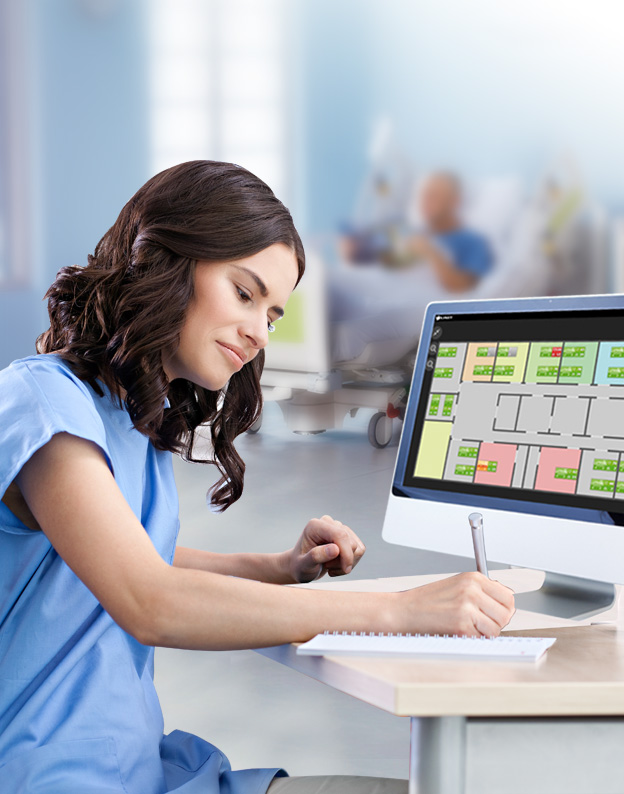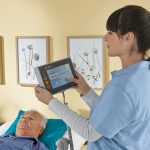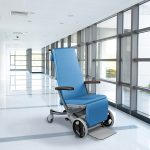Digital helpers, which could not have been imagined in the past, have long since been found not only in nursing homes and old people’s homes – they are also used in home care. But how much digital technology is helpful and desirable? Here part 2 of our Blog contribution:
The beds on a ward can also be monitored with integrated bed sensors. If the brakes are not locked, this is immediately transmitted to a mobile device or monitor, displayed and recorded so that the nursing staff can intervene quickly. „SafetyMonitor“ reports when it has been forgotten to set the lowest bed height at night (to minimize the consequences of a possible fall) or the angle of attack of the backrest to less than 30° (to prevent pulmonary complications). Sensors also register if the side guards have not been fitted adequately or if a patient leaves his bed (bed exit alarm). A warning signal sounds. SafetyMonitor can be used in combination with the EMR-capable beds from wissner-bosserhoff, which are equipped with sensors and a communication module so that data can be transmitted from the bed to a central server. For example, the system is fully compatible with eleganza 4 and eleganza 5.
When monitoring dementia patients using apps, webcams and GPS, the wishes and living wills of those affected, their relatives, doctors and nurses can diverge greatly. Not everyone agrees with total Huxley-style monitoring, which always allows the patient to be monitored when he or she leaves a defined area of a nursing home, residential complex or district in order to locate and „pick up“ him or her.
Although the use of digital technology is often ambivalent, in many areas it is impossible to imagine life without it. This also applies to the care sector, for example in the joint processing of information, in care documentation and planning, patient administration or billing. For example, voice control could also be helpful in the documentation of activities performed, one of the „time thieves“ in hospitals and care facilities, which can take a considerable amount of time. Whether you like it or not, the relaxation of the ban on remote treatment in 2018 has paved the way for a significant expansion of telemedicine in the future.


